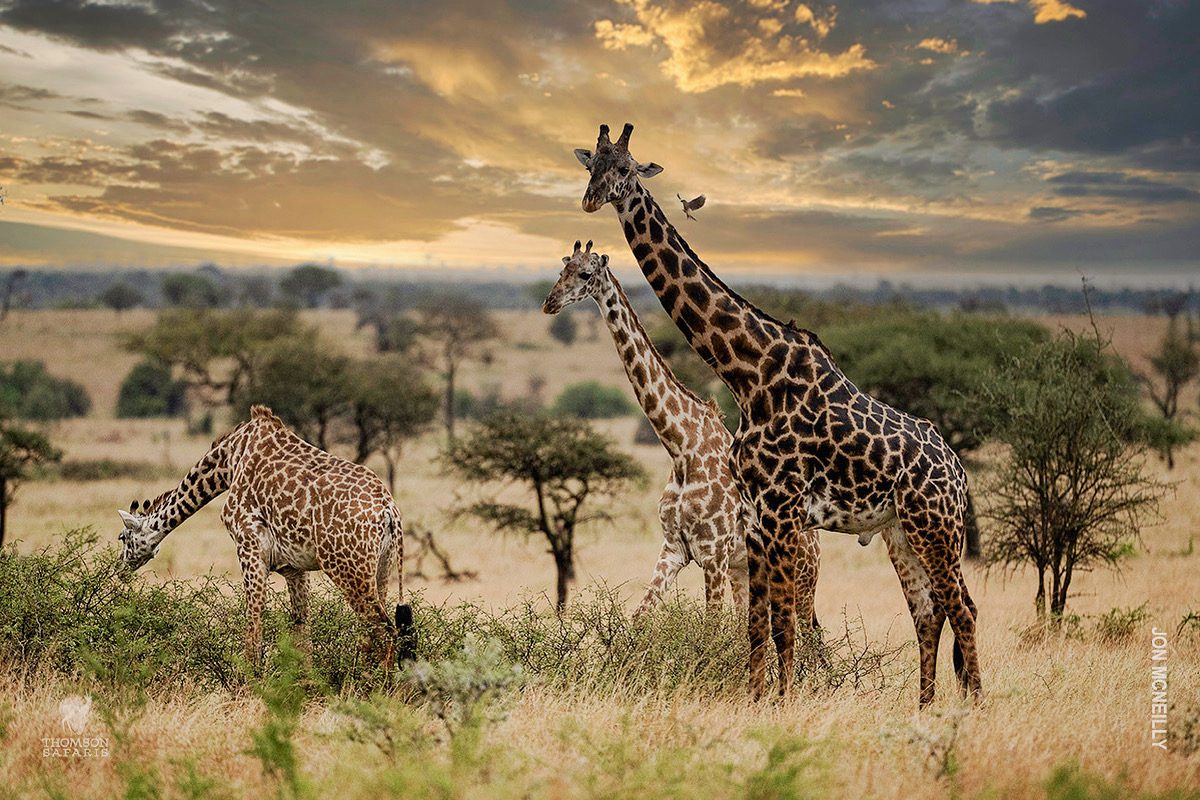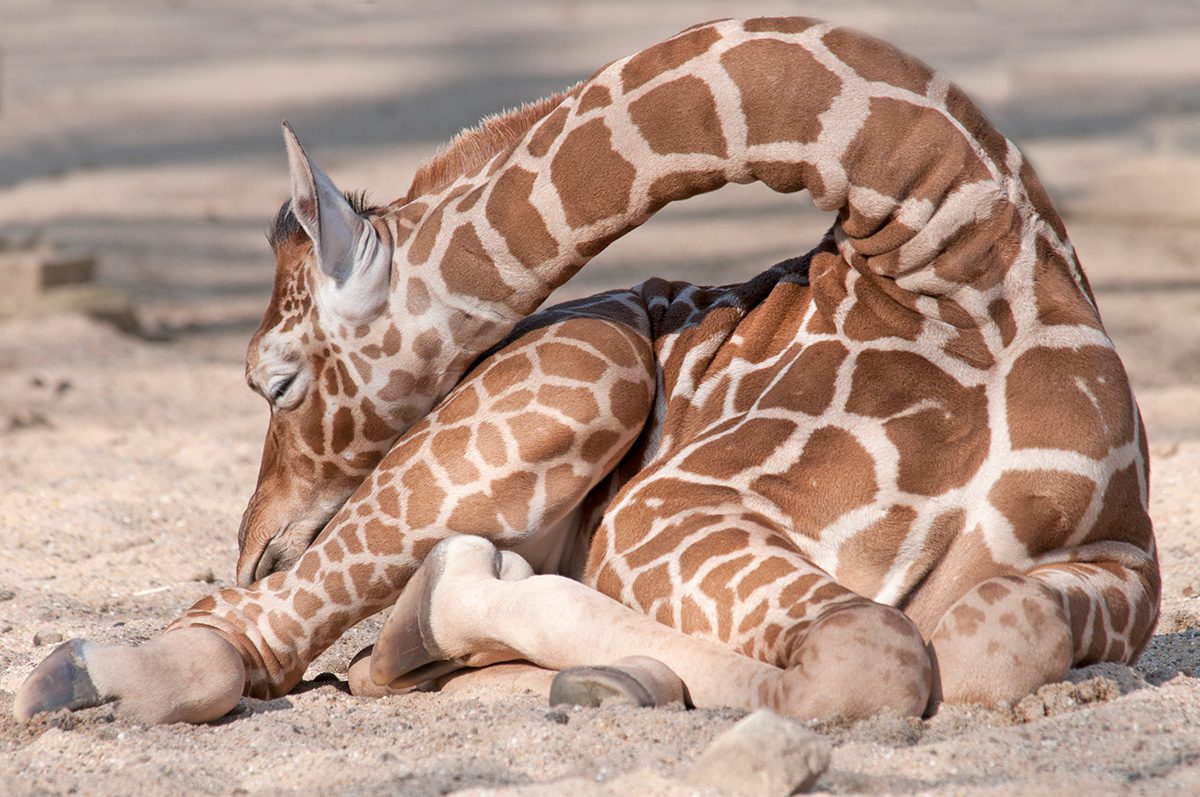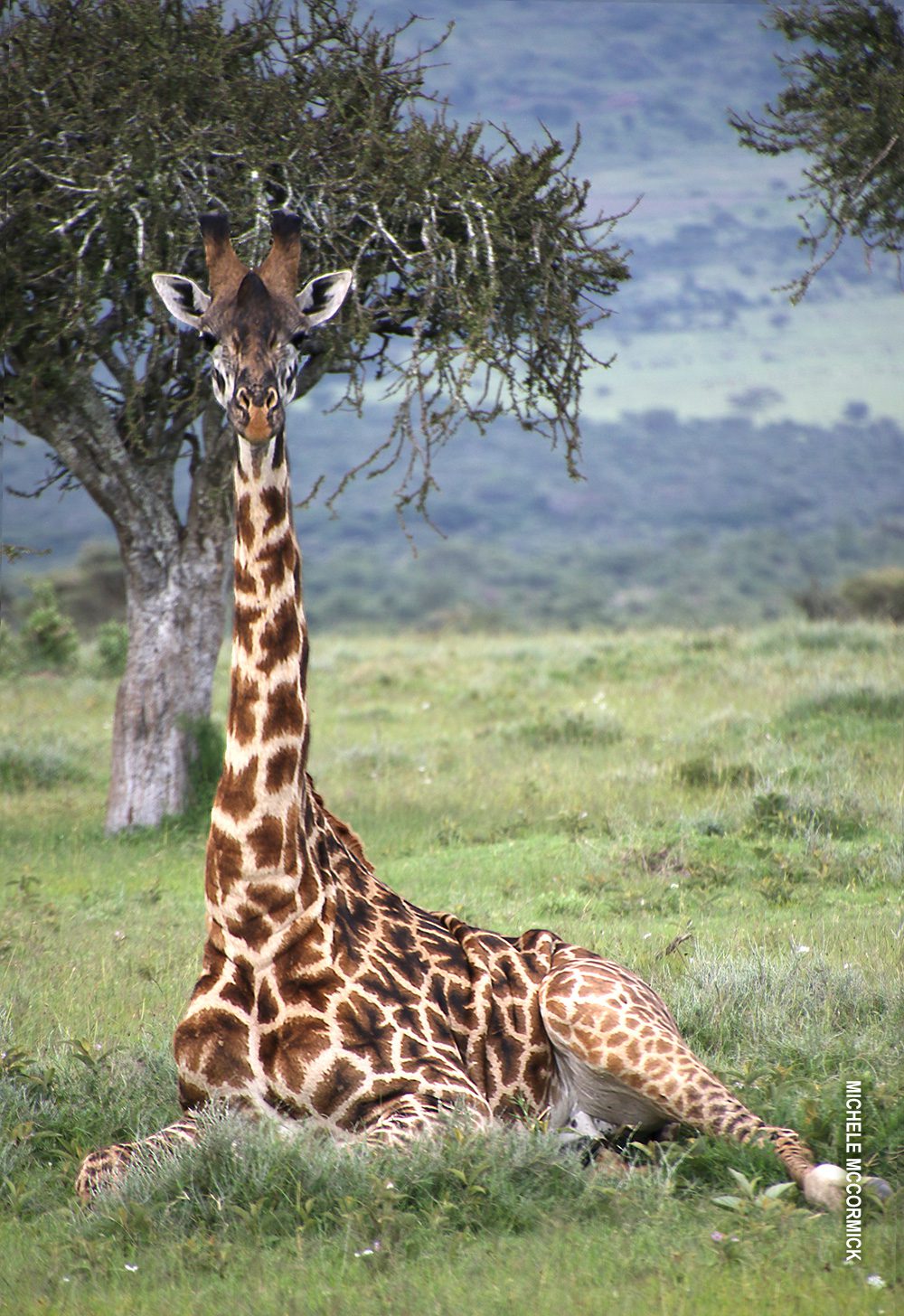Don’t Lose Sleep Over It: The Strange Sleeping Habits of Giraffes

Anyone who’s pulled an all-nighter (or simply stayed up a little too long past his or her bedtime on a school night) is well aware of just how much sleep we need to function well (and how even a small deficit can throw us off our game). For reasons we still don’t really understand, our brains seem to need a lot of time to reboot.
But in the wild, animals’ sleep patterns have evolved along different lines. For them, sleep comes at a steeper price (one that must have affected our distant ancestors, too): vulnerability. Even successful predators don’t sleep the way humans do—deeply, essentially undefended, and at one long stretch. Lions, the apex land predator in Africa, rest up to 20 hours a day, but there’s a reason we call short, easily-interrupted rests “cat naps”; cats are ready to spring to action much more quickly upon waking than you or I.
Giraffes, though, may be the strangest sleepers in the Serengeti. As babies, they lay down with their legs tucked beneath their bodies (lowering themselves to the ground is a serious process) and rest their heads…on their rumps. Apparently, they’re their own best pillows!
 Naptime can be anytime if you carry your own pillow with you!
Naptime can be anytime if you carry your own pillow with you!
Adult giraffes occasionally sleep like this, too, but rarely for more than a few minutes at a time. In fact, they almost never sleep for longer than five minutes at a stretch in the wild, often modifying the position so that they remain standing with their head and neck curved around to rest on their hindquarters. More often, they sleep fully standing—again, in short bursts—or experience a sort of half-sleeping resting period, in which the eyes remain half-open, the animal stays fully upright, and the ears continue to twitch.

All in all, adult giraffes get by on just 30 minutes of sleep a night (on average). It’s the shortest sleep requirement in the entire animal kingdom!
Why so wakeful?
Because an animal that large lying down in the middle of the plains is just too tempting a feast for nearby predators. Giraffes are huge, and can run as fast as 35 miles an hour; when they’re alert, they’re not easy targets.
But standing up is an awkward, lengthy procedure, and the animals aren’t equipped to play serious defense; they don’t have thick hides, built-in armor, or sharp teeth to help them fight back when they’re at risk of becoming dinner.
So they sleep with one eye open (sometimes literally), protecting themselves by almost never going off high alert.
Here’s hoping some of the trees they’re methodically munching most of the day are covered in coffee beans!

